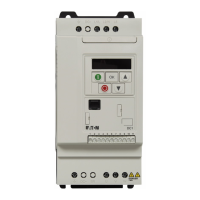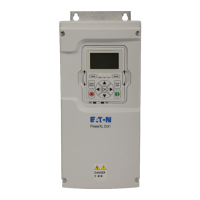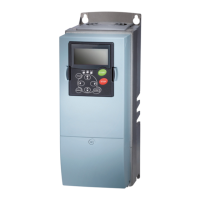2 Engineering
2.2 Electrical power network
DC1 Frequency Inverter 10/12 MN04020003Z-EN www.eaton.com 31
The required filter winding for electromagnetic compatibility (EMC) no longer
exists in this case.
2.2.2 Mains voltage and frequency
The standardized rated operating voltages (IEC 60038, VDE 017-1) of power
utilities guarantee the following conditions at the connection point:
• Deviation from the rated value of voltage:
maximum ±10 %
• Deviation in voltage phase balance:
maximum ±3 %
• Deviation from rated value of the frequency:
maximum ±4 %
The broad
tolerance band
of the
DC1 frequency inverter
considers
the
rated
value for European as (EU: U
LN
= 230 V/400 V, 50 Hz) and American as
(USA: U
LN
= 240 V/480 V, 60 Hz) standard voltages:
• 115 V, 50/60 Hz at DC1-1D…
110 V - 10 % - 115 V + 10 % (99 V - 0 % - 126.5 V + 0 %)
• 230 V, 50 Hz (EU) and 240 V, 60 Hz (USA) at DC1-12…, DC1-32…,
DC1-S2…
200 V - 10 % - 240 V + 10 % (190 V - 0 % - 264 V + 0 %)
• 400 V, 50 Hz (EU) and 480 V, 60 Hz (USA) at DC1-34…
380 V - 10 % - 480 V + 10 % (370 V - 0 % - 528 V + 0 %)
The permissible frequency range for all voltage categories is 50/60 Hz
(48Hz-0%-62Hz+0%).
2.2.3 Voltage balance
Because of the uneven loading on the conductor and with the direct connec-
tion of greater power ratings, deviations from the ideal voltage form and
asymmetrical voltages can be caused in three-phase AC power networks.
These asymmetric divergences in the mains voltage can lead to different
loading of the diodes in mains rectifiers with three-phase supplied frequency
inverters and as a result, to an advance failure of this diode.
→
Measures for electromagnetic compatibility are mandatory in a
magnet system, to meet the legal standards for EMC- and low-
voltage regulations.
Good earthing measures are a prerequisite for the effective
insert of further measures such as screen earth kit or filters
here. Without respective grounding measures, further steps are
superfluous.

